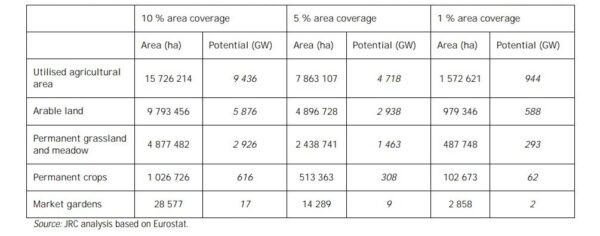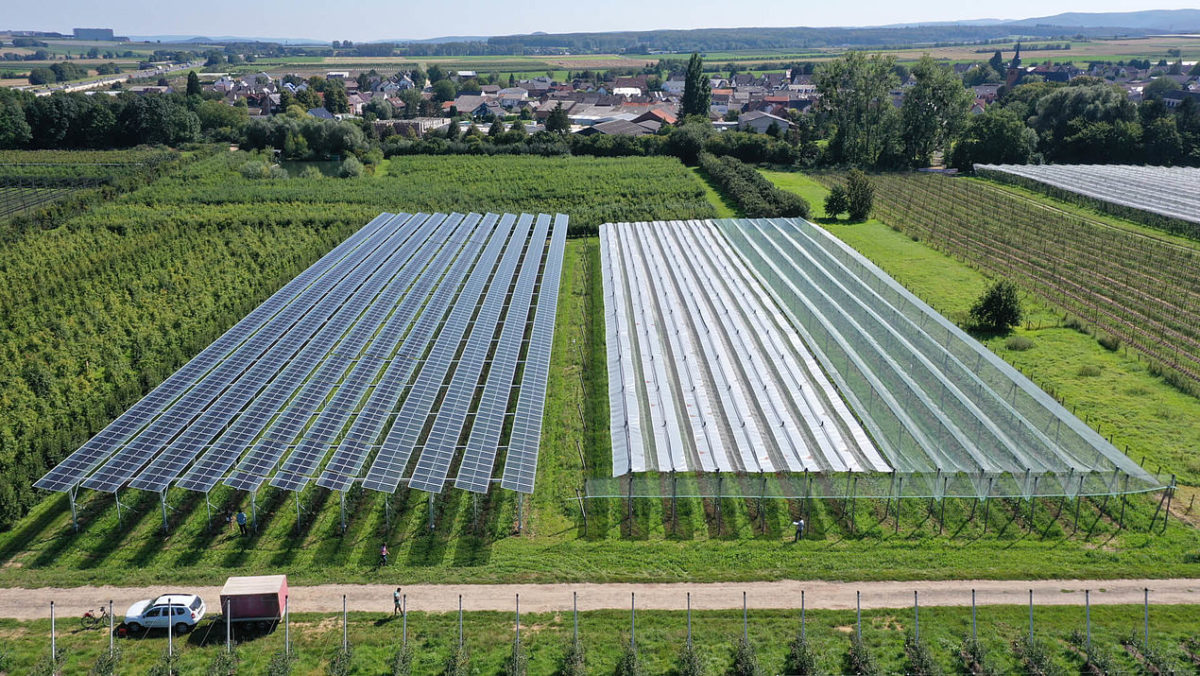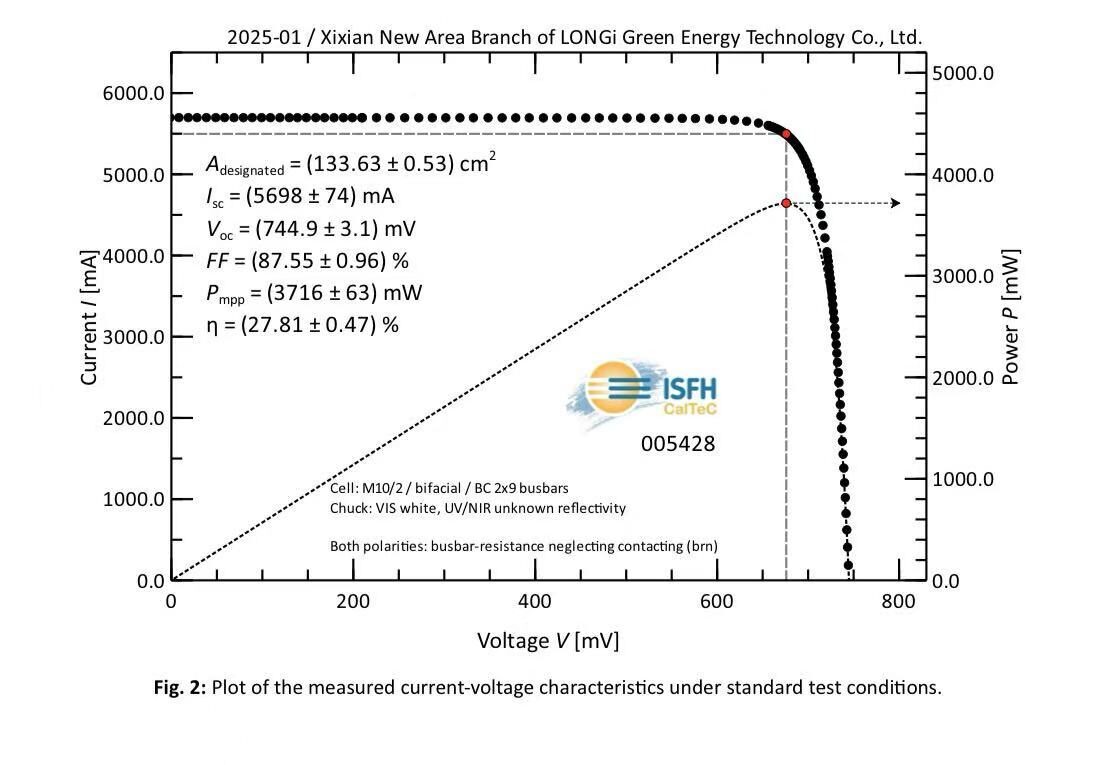Up to 944 GW direct current installed capacity could be deployed if 1% (157,621 hectares) of utilized agricultural area (UAA) in the European Union applied agrivoltaic systems – a fivefold increase on the total EU installed capacity in 2022, a new assessment by the European Commission’s Joint Research Centre (JRC) states.
In the “Overview of the Potential and Challenges for Agri-Photovoltaics in the European Union” report, the researchers determined this figure assuming an installed capacity per land area of 0.6 MW per hectare, with the EU’s total UAA being 158 million hectares.
“Agri-PV potential of installed capacity is at TW scale for the two main land categories of arable land and permanent grassland and meadow assuming that they are covered by 10 % and 5 % with Agri-PV systems,” the paper states. “If the 10% of EU's UAA is covered with Agri-PV systems, the installed capacity could be between 3.2 and 14.2 TW, while only 5 % of coverage would lead to a total capacity comprised between 1.5 and 7 TW.”

JRC.
Some parameters are still hindering agri-PV’s large-scale success, the JRC researchers found. Issues include no clear definition of what agrivoltaics is or what the European standards are, among others.
“One of the main challenges for Agri-PV is related to the absence of a clear and EU-harmonised definition, which could lead to land characterization changes when Agri-PV systems are installed on agricultural land. This change could have an impact on the eligibility to agricultural subsidies,” the document states.
Member states are also “general” in their plans to support investments in renewable energy, with support for agrivoltaics not explicitly mentioned in a majority country’s strategic plans.
“Technical challenges as well as challenges regarding the permitting and grid connection procedures have been also identified. In addition, there has been an increase in land prices impacting the welfare and security of the farmers. Finally, regardless of the technological advancements, there are still technical challenges that need to be addressed in order to maximize the electricity production while taking into consideration the biodiversity and without compromising significantly the crop yield.”
Agrivoltaics' potential could be unlocked if policymakers made changes, according to the report's 17 recommendations. This includes ensuring certified agri-PV systems were not excluded from common agricultural policy (CAP) subsidies; further research and development, and pilot schemes to overcome technical challenges; financial support through member states’ national policies was provided; and more.
Agri-PV deployment could also be fast-tracked through spatial planning and simplifying permitting and grid connection procedures, with the farmer's economic benefit and property security placed front-of-mind for governments.
“Even though it is not a new concept, the interest for this form of PV deployment has increased rapidly over the last few years mainly due to the increasing need for electricity production and the limited availability of new land due to the increasing global food demand,” the paper states. “Continued research and development, in particular cross-cutting studies that take into account energy, crop yield and biodiversity aspects, will be essential to overcome technical challenges and ensure fully sustainable solutions for the future.”
This content is protected by copyright and may not be reused. If you want to cooperate with us and would like to reuse some of our content, please contact: editors@pv-magazine.com.



By submitting this form you agree to pv magazine using your data for the purposes of publishing your comment.
Your personal data will only be disclosed or otherwise transmitted to third parties for the purposes of spam filtering or if this is necessary for technical maintenance of the website. Any other transfer to third parties will not take place unless this is justified on the basis of applicable data protection regulations or if pv magazine is legally obliged to do so.
You may revoke this consent at any time with effect for the future, in which case your personal data will be deleted immediately. Otherwise, your data will be deleted if pv magazine has processed your request or the purpose of data storage is fulfilled.
Further information on data privacy can be found in our Data Protection Policy.